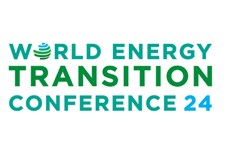Six best practices for project controls
Published by Sarah Smith,
Assistant Editor
Hydrocarbon Engineering,
To combat the megaproject complexity, organisations are implementing procedures and systems that offset the risks of overruns. The intent is to add visibility into project performance and allow for greater agility to address issues that lead to overruns before they grow into billions in added expenses. Project controls is a set of tools and processes that help manage projects through measuring, forecasting, and improving project performance.
In order to provide unprecedented project performance, your project controls processes should employ certain best practices. Each of these concepts provide the best results when they work closely together.
1. Planning and standardisation
A successful project cannot begin without detailed plans, an implementation schedule, and tracking tools. Each activity should be anticipated and scheduled, with milestones that include clear expectations and a possibility for built-in incentives. This crucial first step can make or break your project right from the start.
Standardisation should be baked into the planning process. Standardised tools and templates help team members create consistency across projects. Consistency, especially at the beginning stages of a project, creates clear and measurable steps to track success, simplify analysis, and replicate successful projects.
2. Documentation and communication
Documentation and communication during the initiation, planning, execution, monitoring, and closeout phases of a project are crucial responsibilities of project controls.
A project environment is dynamic and must be kept up-to-date to stay the course toward its goal. Various stakeholders, managers, and project team members may need the same information, with different details to meet varied expectations.
When everyone works from the same data, communication can focus on facts rather than interpretation. An integrated enterprise project controls solution enables team members to operate from the same pool of information.
3. The 'Living Forecast'
Once a project begins, forecasting is a critical discipline that tells us where we think the project costs and schedule will end based on what we know today. There are a multitude of methods, formulas, and applications for developing a forecast, but all strive to identify when and where corrective action may be needed.
Given that, a 'Living Forecast' seeks that semi-automated forecast adjustments occur regularly. The idea is for every project in the portfolio to have an up-to-date forecast every period, where the adjustments are fully auditable.
4. KPIs that add insight
Key performance indicators (KPIs) are quantifiable measures used to evaluate performance related to operational goals. They are carefully linked to enterprise strategy and can provide important information to team members for project completion and success.
In addition to the tried and true KPIs of project management, project controls must also include KPIs that add an enhanced level of insight. Specific KPIs that add actionable insight to project controls include:
- Predictability Index: accurately predicting project outcomes early is key to a project's ultimate success. Predictability indices measure a project team's ability to accurately predict cost and performance.
- Earned Schedule (ES): an enhancement to Earned Value Management
5. Proactivity
Problem solving and issue resolution must be managed in a proactive manner, course-correcting quickly and effectively when necessary, before time and resources have been wasted. Proactive control of a project has effects on budget, time, quality, and human resources.
KPIs are an indispensable tool for proactive management of a project, providing close oversight of the measurables and on-going results. Active KPIs provide insights that allow team members to manage a project proactively to avoid process mistakes, and/or manage unexpected challenges before they derail the project.
6. Integration and automation
Enterprise project controls solutions allow businesses to quickly integrate data, making information available and secure, and create a single source of truth for schedules, budgets, expenditures, timesheets, invoices, and all data that affects the progress of the project.
The right integrated solution also opens the possibility for automation, which lowers the rate of human error, while saving time and money by reducing the need for labour-intensive manual tasks. More accurate insights are available sooner, facilitating better decision making and greater proactivity.
The right tools for project controls
The endgame is all about successful projects, and modern technology offers the solution by providing project management platforms that incorporate project controls' best practices.
With the right tools working 24/7, your staff, management, stakeholders, and anyone who touches the project will have everything they need to produce successful projects again and again.
EcoSys Projects provides planning, tracking, measurement, and predicative indices that enable team member communication, proactive responses to challenges, and effective forecasting of project success. Request a demo to see it in action and learn how EcoSys can help you incorporate these best practices into your own project controls.
Read the article online at: https://www.hydrocarbonengineering.com/special-reports/18112019/6-best-practices-for-project-controls/
You might also like
Viridi Energy signs 20-year agreement with Énergir
Viridi Energy, a renewable natural gas (RNG) platform, has signed a 20-year offtake agreement with Énergir, L.P.


